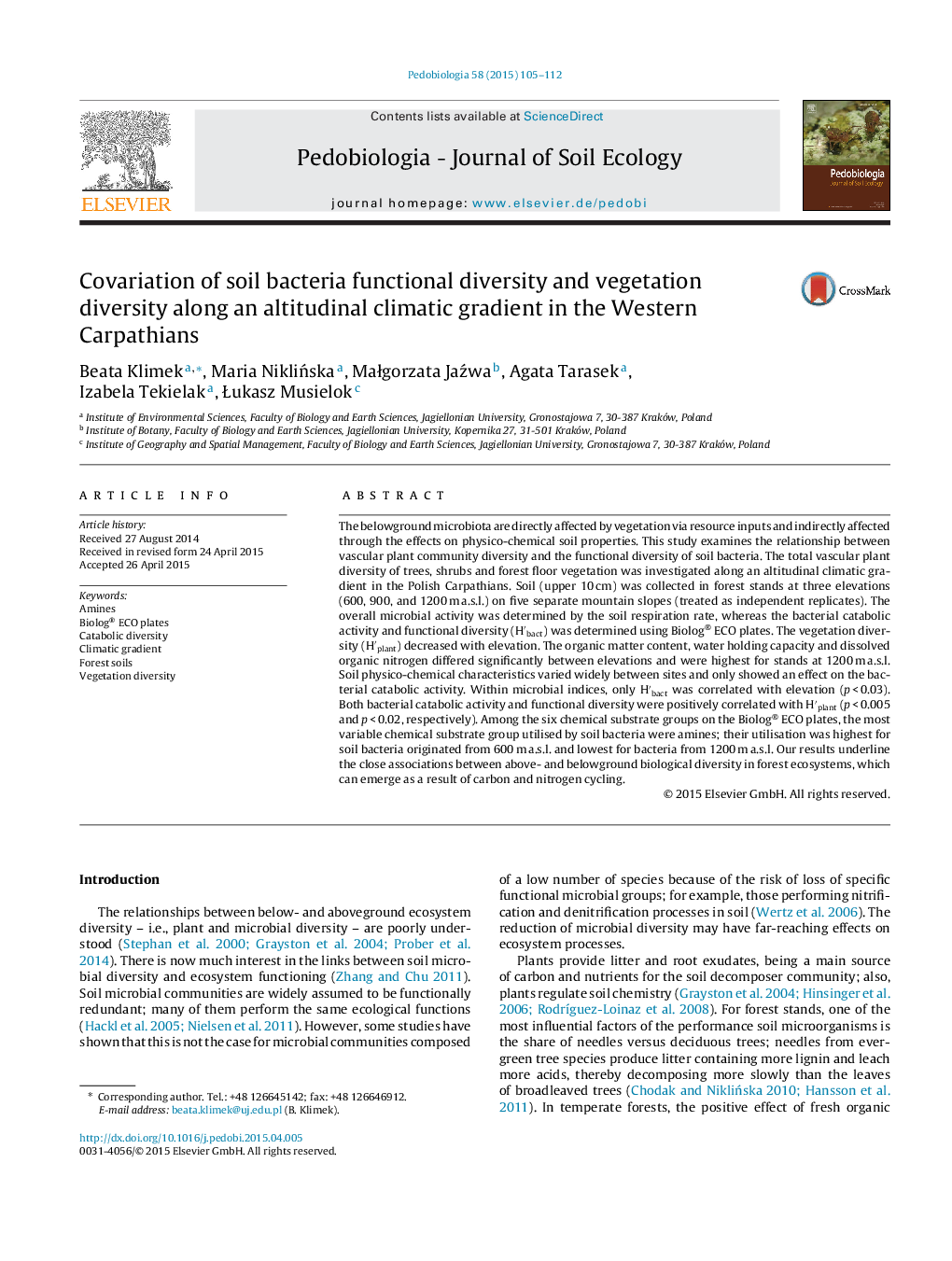| Article ID | Journal | Published Year | Pages | File Type |
|---|---|---|---|---|
| 2061012 | Pedobiologia | 2015 | 8 Pages |
•The study focuses on relationships between plant and soil bacteria diversity.•Soils were collected along mountain altitudinal climatic gradient.•Biolog® ECO plates were used for soil bacteria catabolic diversity determination.•A positive effect of plant diversity on bacterial functional diversity was found.
The belowground microbiota are directly affected by vegetation via resource inputs and indirectly affected through the effects on physico-chemical soil properties. This study examines the relationship between vascular plant community diversity and the functional diversity of soil bacteria. The total vascular plant diversity of trees, shrubs and forest floor vegetation was investigated along an altitudinal climatic gradient in the Polish Carpathians. Soil (upper 10 cm) was collected in forest stands at three elevations (600, 900, and 1200 m a.s.l.) on five separate mountain slopes (treated as independent replicates). The overall microbial activity was determined by the soil respiration rate, whereas the bacterial catabolic activity and functional diversity (H′bact) was determined using Biolog® ECO plates. The vegetation diversity (H′plant) decreased with elevation. The organic matter content, water holding capacity and dissolved organic nitrogen differed significantly between elevations and were highest for stands at 1200 m a.s.l. Soil physico-chemical characteristics varied widely between sites and only showed an effect on the bacterial catabolic activity. Within microbial indices, only H′bact was correlated with elevation (p < 0.03). Both bacterial catabolic activity and functional diversity were positively correlated with H′plant (p < 0.005 and p < 0.02, respectively). Among the six chemical substrate groups on the Biolog® ECO plates, the most variable chemical substrate group utilised by soil bacteria were amines; their utilisation was highest for soil bacteria originated from 600 m a.s.l. and lowest for bacteria from 1200 m a.s.l. Our results underline the close associations between above- and belowground biological diversity in forest ecosystems, which can emerge as a result of carbon and nitrogen cycling.
